Trying rafting for the first time can feel daunting due to all the "unknowns". However, it also presents a fantastic opportunity to discover a new activity and enjoy the magnificent outdoors from a completely different perspective.
Whether you're embarking on a commercial rafting trip with a reputable outfitter or hopping on a private boat with a friend, we're here to assist you. We understand that hitting the water for the first time may be a bit nerve- wracking, but it's also incredibly thrilling and always a rewarding experience.
This list of FAQs is designed to address any queries you might have about rafting as a beginner and help calm your nerves so you can enjoy the experience to its fullest.
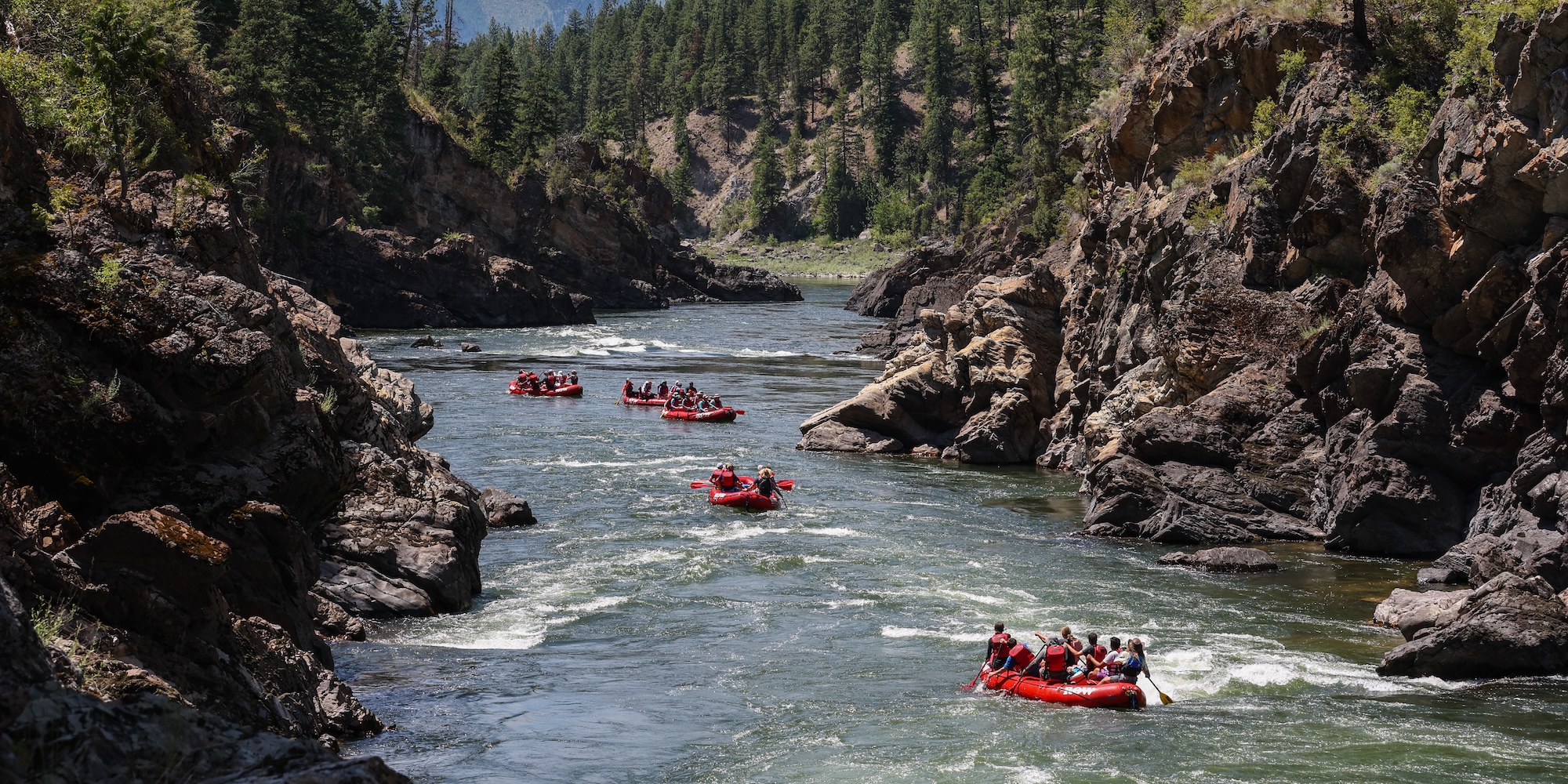
Do I need to have experience to go rafting?
Not at all! First-time rafters are always welcome to join our trips, and you'll receive a thorough safety briefing before you hit the water. Our guides will walk you through how to paddle and provide detailed instructions throughout the journey to make sure it’s a fantastic adventure for all the right reasons.
It’s also worth keeping in mind, however, that each river has its own character, and some are meant for seasoned rafters only. When choosing your trip, consider not just your skill level but also what you feel comfortable with.
Check out this detailed article to gain a better understanding of whitewater classification levels, so you can pick a trip with rapids that are manageable for you.
For those new to rafting, the best experiences are usually found on relatively calm rivers, with a few fun (but manageable) drops sprinkled in. By starting off gently, you’re more likely to build the confidence you need to come back and take on something a bit more challenging next time.
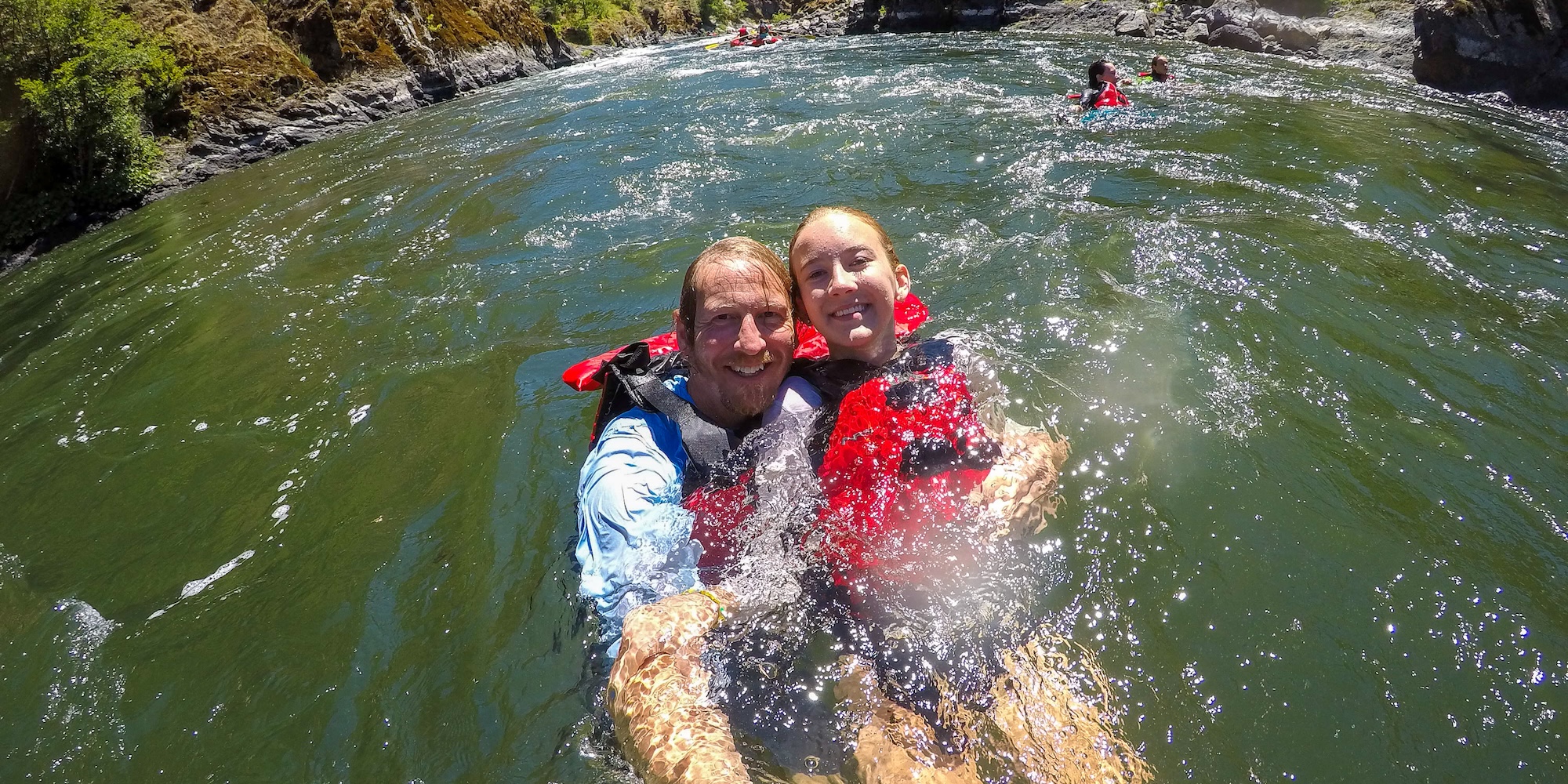
Do I need to know how to swim to go rafting?
No, you don’t have to know how to swim to go rafting or possess strong swimming abilities. During all our trips, you will be equipped with a PFD (personal flotation device), which offers additional buoyancy if you find yourself in the water. On calmer sections of the river, many participants enjoy jumping in and floating down feet first, which is always a really fun experience.
While swimming skills aren’t necessary, it is important to be able to follow directions and pay attention to your guide throughout the adventure. There are risks involved with any whitewater rafting adventure, and your guide is trained to navigate around underwater hazards and maintain your safety at all times. However, they need your cooperation to achieve this, and working together as a team is an essential part of any whitewater rafting trip.
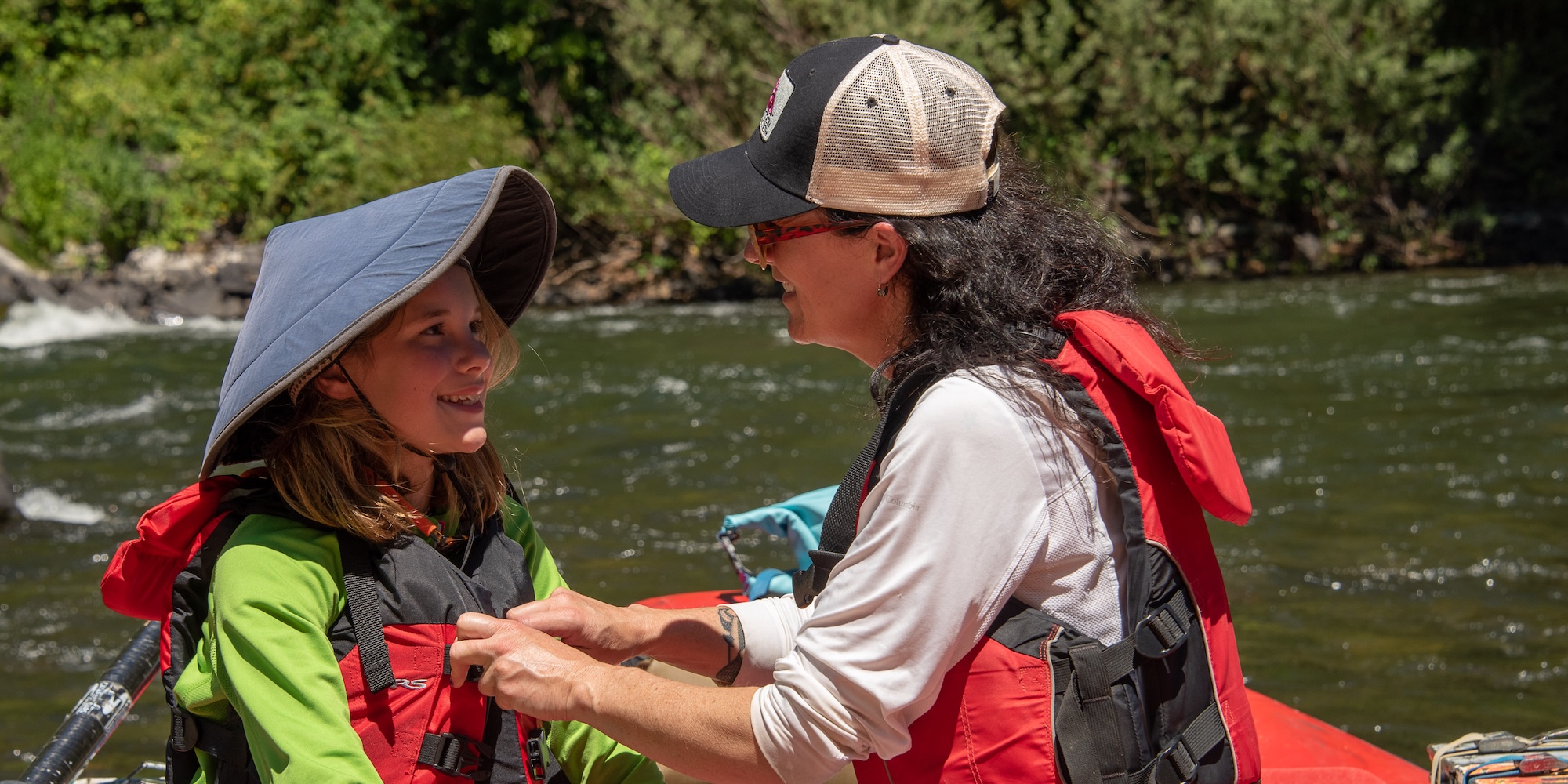
Is whitewater rafting safe for kids?
Whitewater rafting is an excellent activity for families and a great bonding experience. If you’re thinking about rafting with kids, keep in mind the age requirements can differ based on the river and the specific rafting trip. That being said, there are rivers that welcome children as young as 5.
If you’re looking for the best family-friendly rafting rivers in the United States, we recommend the Clark Fork, the Salmon River, and the Rogue River.
If it's your child’s first time going whitewater rafting, we suggest starting with Class I, II, or III rapids (instead of jumping right into a Class IV river). For a beginner-friendly outing with the family, consider one of our one-day whitewater rafting trips on Idaho’s St. Joe River or the Clark Fork River in Montana.
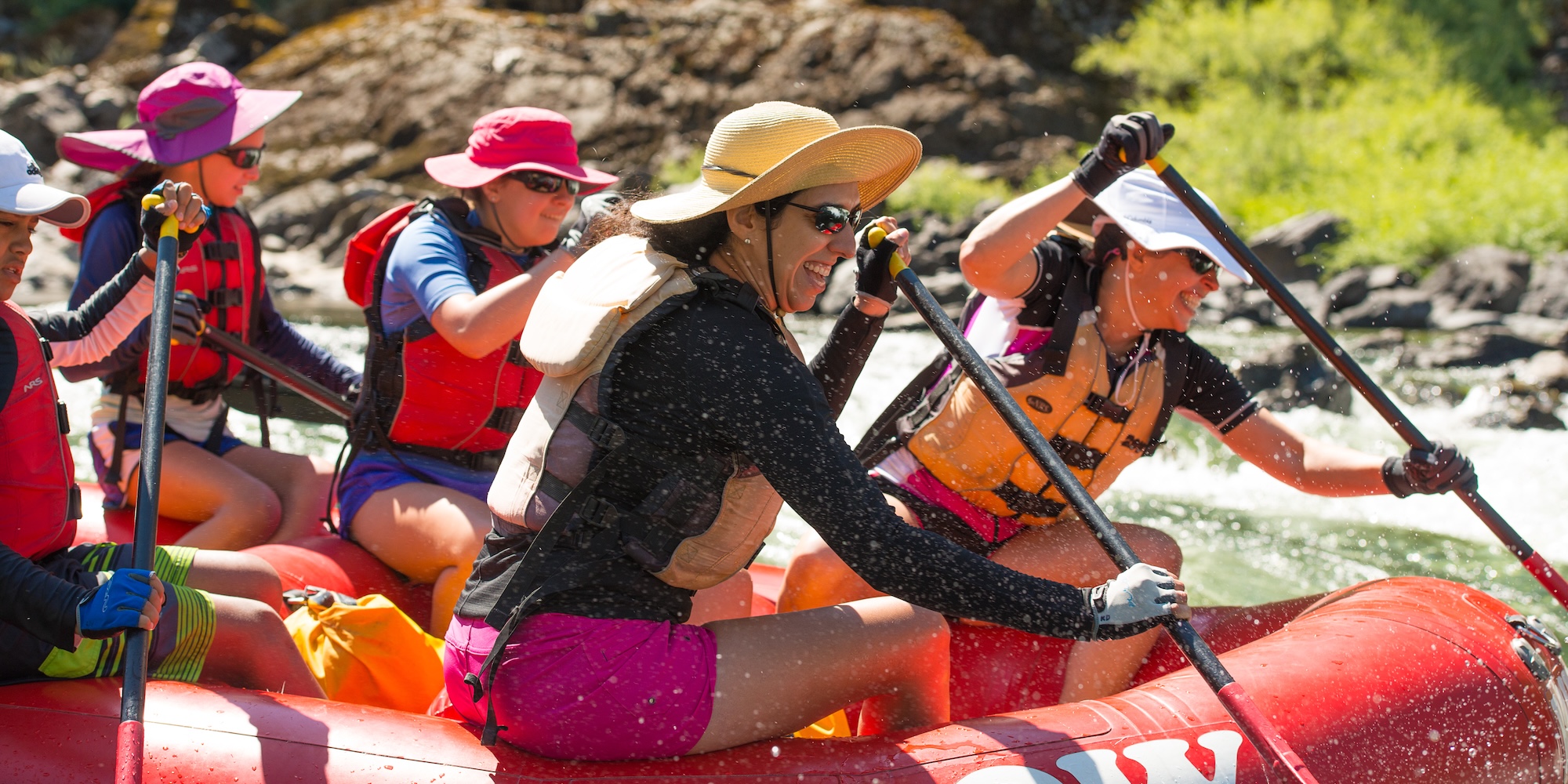
What should I wear while rafting?
If you’re heading off on a whitewater rafting adventure, you should choose clothing that is both lightweight and quick-drying, ideally with UV protection. Even if you don’t find yourself in the water, it’s almost certain that you’ll get wet, so keep this in mind!
At the peak of summer, a long-sleeve shirt will protect your skin from the sun’s harmful rays. If you’re on an early or late-season whitewater rafting trip, consider wearing a fleece or wool top for some extra warmth. If it’s really chilly, a wetsuit jacket or dry top may be necessary.
For your feet, sandals or wetsuit booties with good traction are recommended, as they will help protect your feet when getting in and out of the raft. Additionally, wearing sunglasses with a retainer is a good idea. This will ensure they stay around your neck if you encounter any “bumps”, instead of ending up in the water.
Lastly, don’t forget to bring a towel and a set of dry clothes to change into at the end of the day.
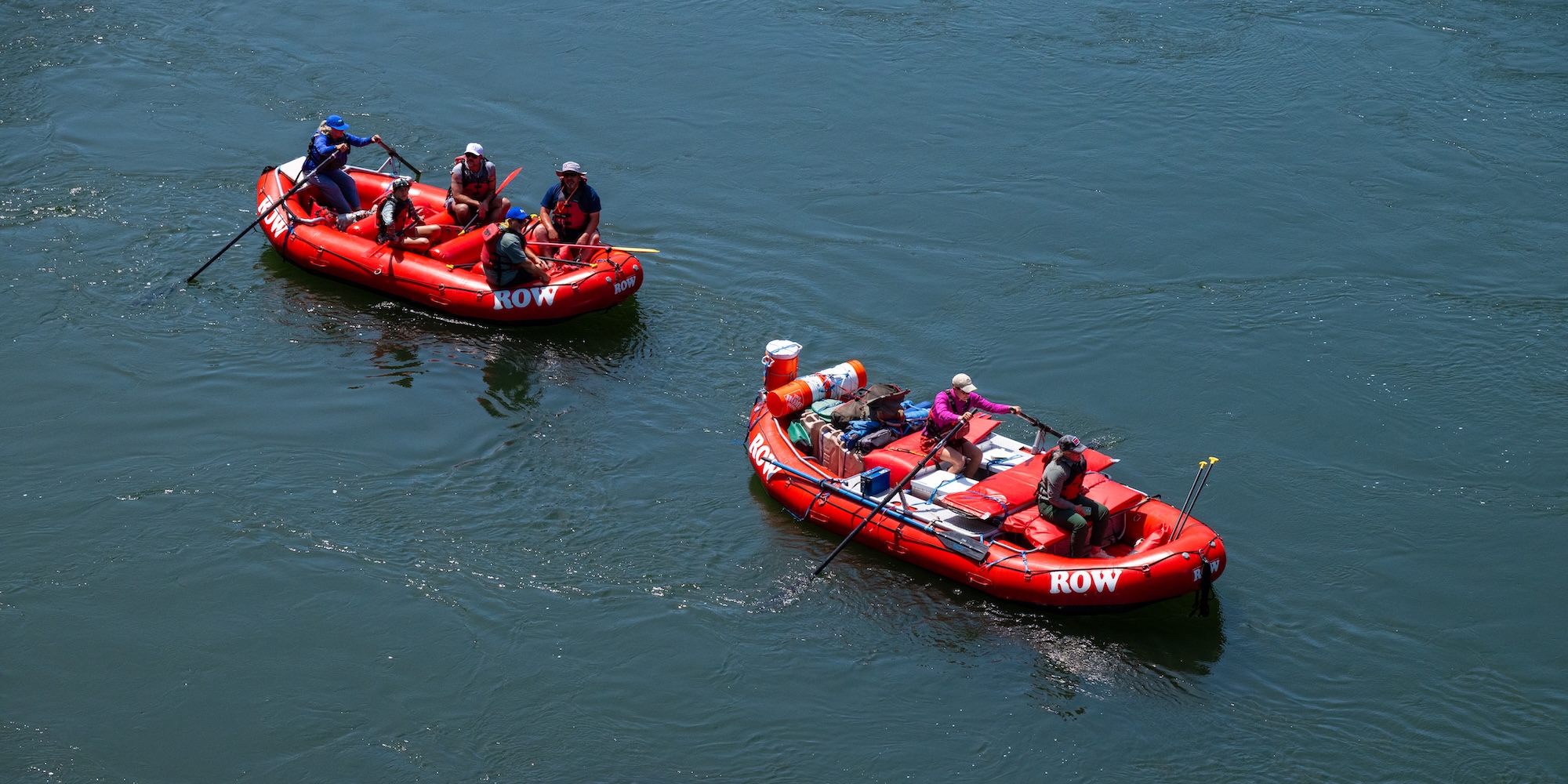
What should I bring with me rafting?
It's important not to take anything on your rafting adventure that you wouldn't want to lose or have destroyed if it gets wet. This means leaving behind expensive cameras and cell phones that could be swept away by the whitewater or damaged in a (not-so-waterproof) case.
When you're getting ready for your rafting trip, keep in mind that space on the raft is limited, so bring only the essentials. We will supply you with a small dry bag for items you may need to access during the day. For ideas of what to put in your dry bag, check out our blog post here.
We recommend applying sunscreen before you depart from the support vehicle and carry a water bottle that you can attach to the raft’s D-rings. This will prevent you from losing it in rough waters.
For those joining one of our multi-day rafting trips, we provide a suggested packing list after booking to assist you in your preparations. Once again, steer clear of bringing anything non-essential. Only pack things you wouldn't mind losing or damaging along the way.
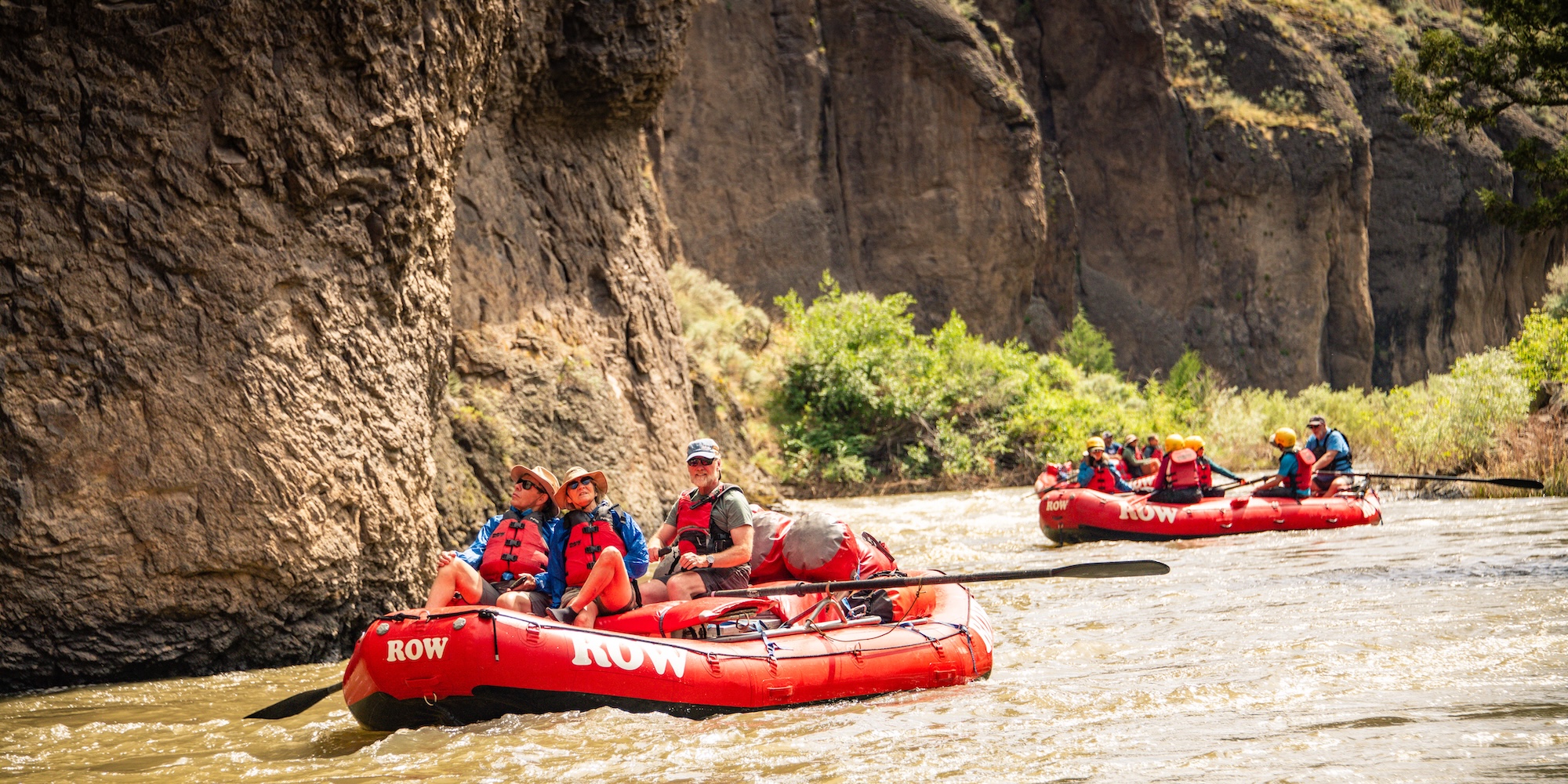
When is the best time to go rafting?
In the United States, the whitewater rafting season extends from May to September, coinciding with the summer months when the weather is at its warmest. From late May to early June, many rivers see high water levels due to spring runoff, leading to faster currents and larger waves.
Medium water levels are generally observed from late June to mid-August, making this an ideal time for beginners or families to enjoy the water. This period is also the peak rafting season in the United States, so it's wise to book well in advance, especially for weekend trips.
From late August to September, you can expect lower water levels, which can expose or highlight some underwater river features.
When researching the best time to go rafting, remember that some of the rivers we navigate are regulated by dams, meaning their flow rates and rafting conditions can be altered with human intervention. All of our rafting excursions on these waterways are organized to take full advantage of the optimal flows, ensuring the best experience for our guests.
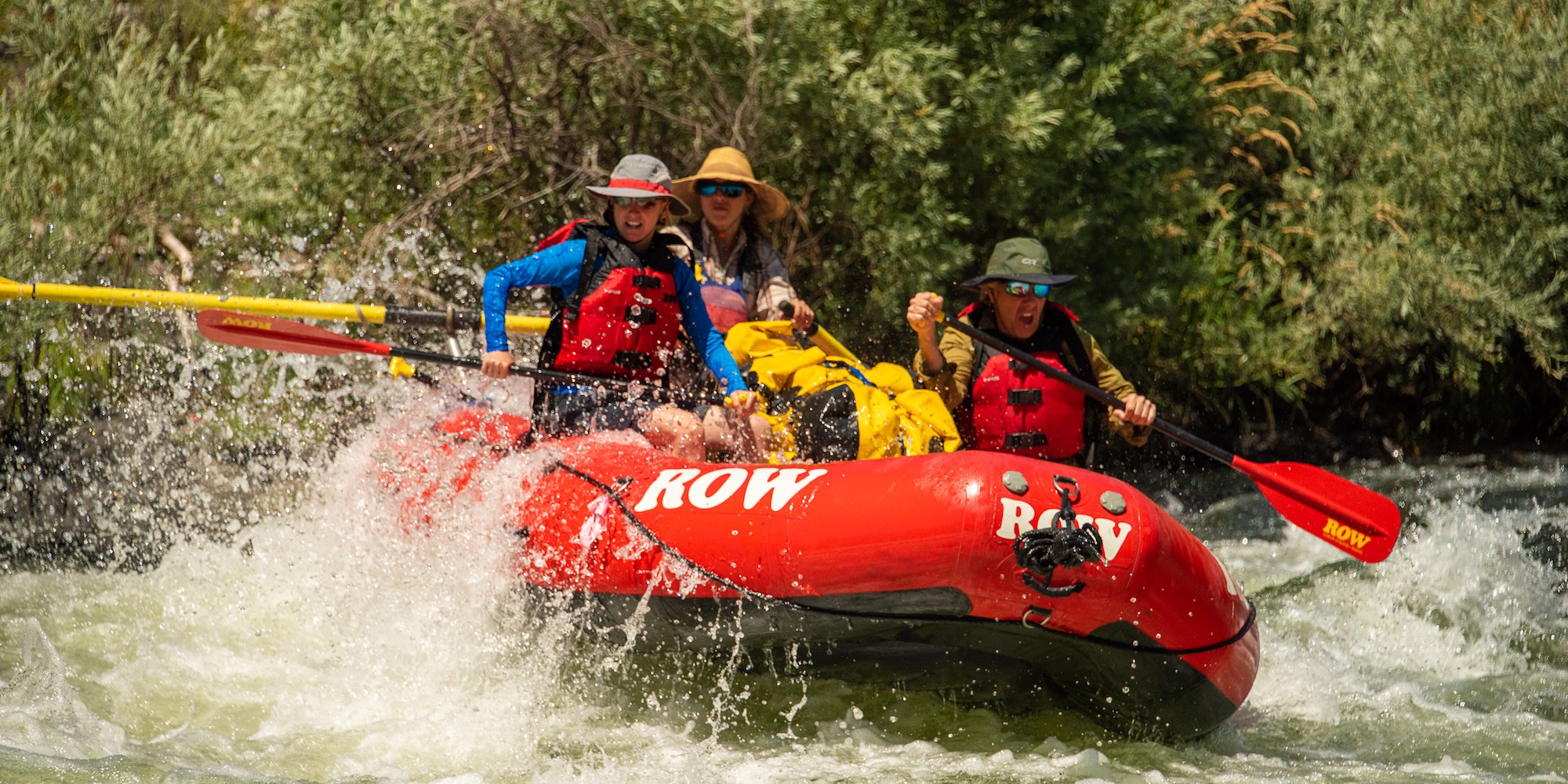
What happens if I fall into the river?
Falling into the river is a completely normal part of a whitewater rafting adventure, so there's no need to stress about it. In fact, it can be one of the most enjoyable parts of the adventure!
It's crucial to keep in mind that the unpredictable nature of wild waters means there's always a possibility of being thrown overboard, despite our best efforts to avoid it. Therefore, it's essential to pay close attention to your guides' instructions and to wear the proper safety gear, which is required on all ROW Adventures trips.
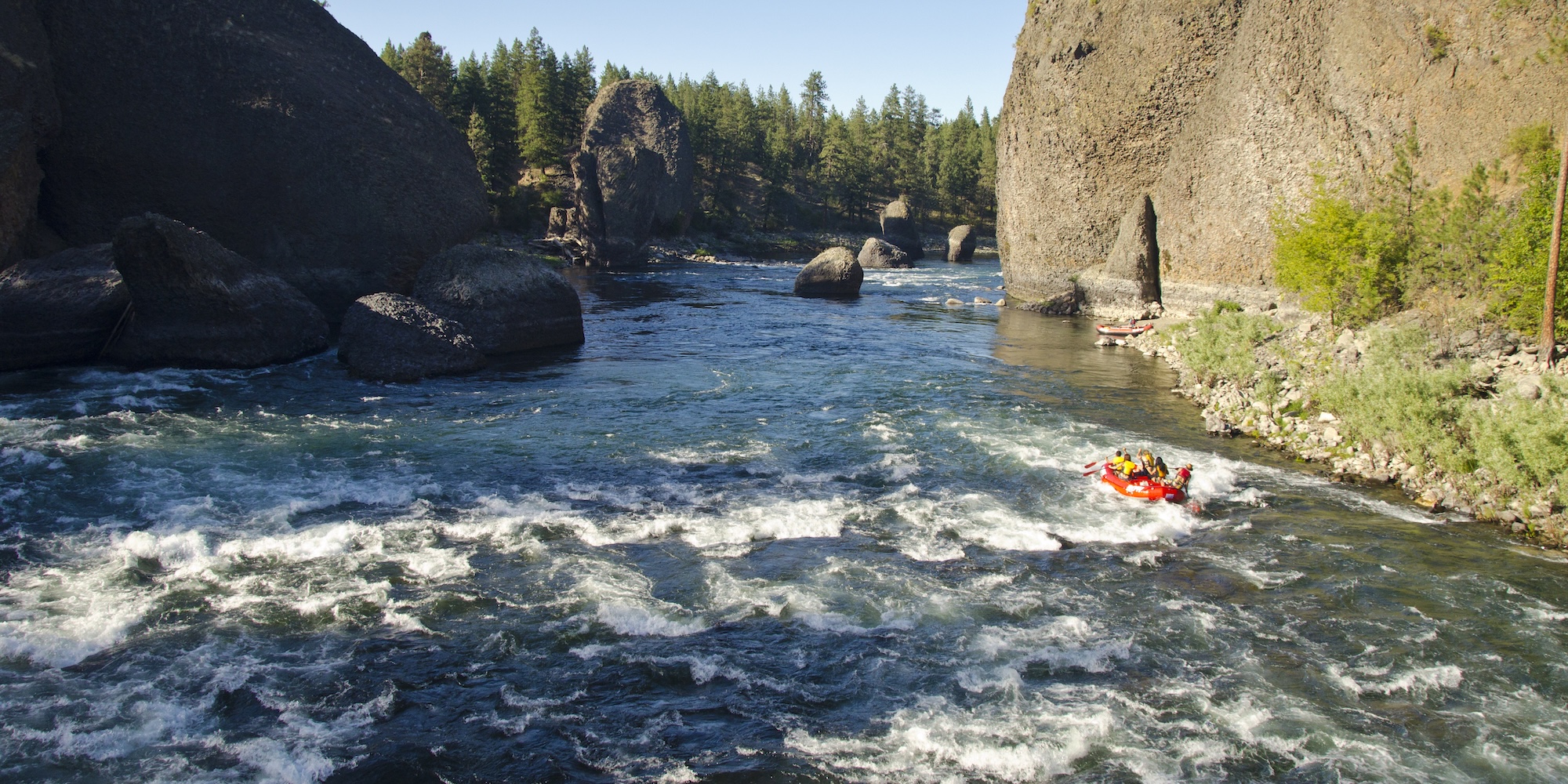
How is the difficulty of rivers classified?
The International River Grading System categorizes river sections according to their difficulty levels. This classification assists rafters in grasping the technical challenges they may face and the skills needed to navigate them.
Rapids are sorted into six categories known as a "Grade"or "Class," indicating the most challenging rapid found along a river segment. It's important to be aware that river classifications can vary with changes in water flow, which is why we always recommend people raft with a knowledgeable guide who understands the river.
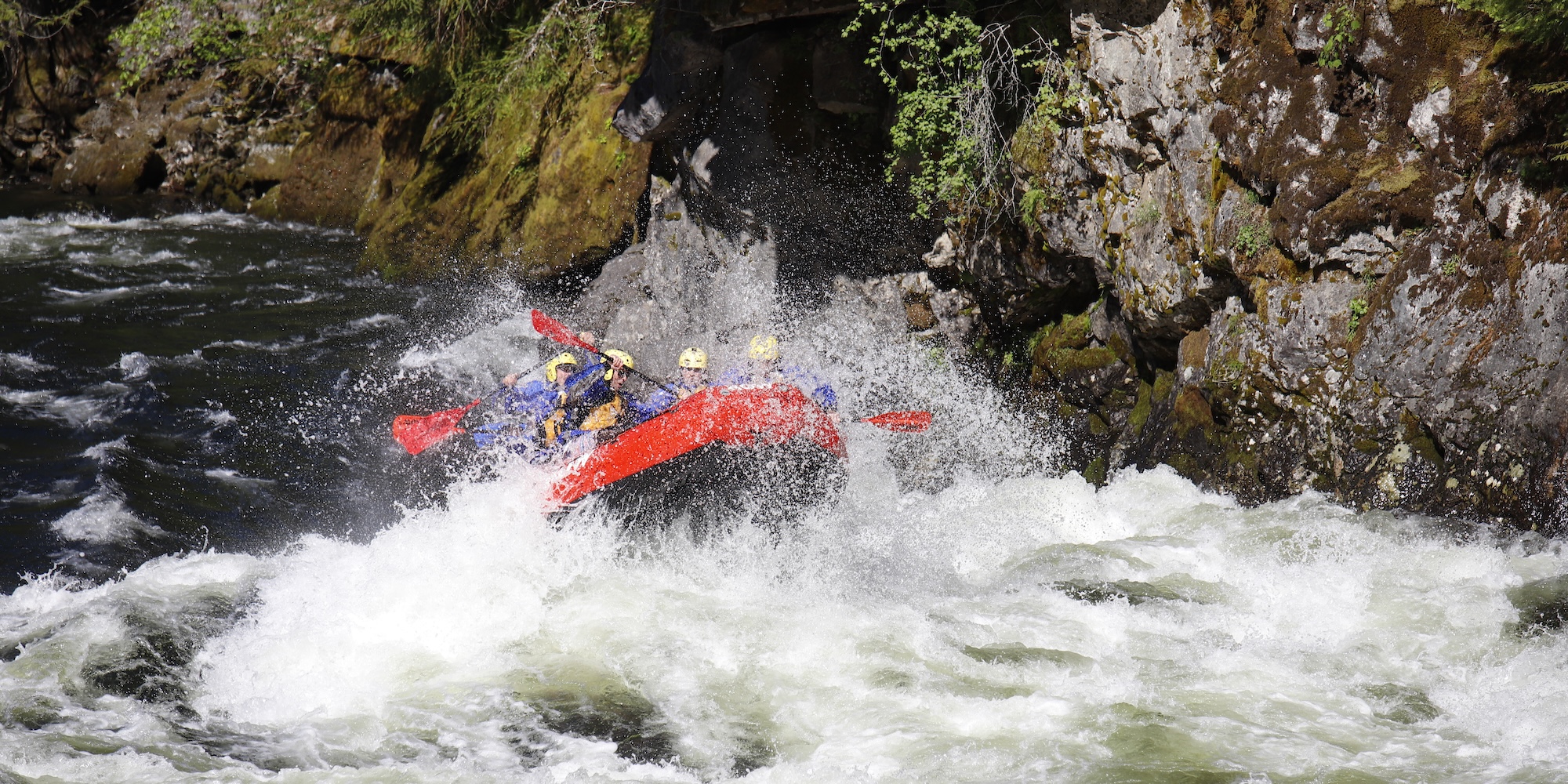
How do I know how challenging the river will be?
One of the easiest ways to gain a general understanding of the challenges you might encounter on a river is by examining its Class or Grade. Class I rapids typically present small waves and minimal obstacles, making it a relaxing choice for families with young children and those who want to enjoy the riverside views.
In the case of Class II rapids, you might come across some rocks and medium-sized waves that are straightforward to navigate, and it's unlikely that you'll capsize.
With Class III rapids, you should anticipate narrower channels, stronger eddies, and powerful currents that could pose difficulties for novice rafters.
Class IV rapids bring more turbulent waters that demand careful navigation, featuring larger waves and unavoidable underwater dangers.
Class V rapids often include significant drops, crowded chutes, and extremely challenging conditions that will definitely get your heart racing. These rivers are best suited for rafters who have prior experience.
As for Class VI rapids, these are incredibly challenging and are not attempted by outfitter rafting expeditions. On these rivers, the risks of making a mistake can be serious, and conducting rescues may be nearly impossible.
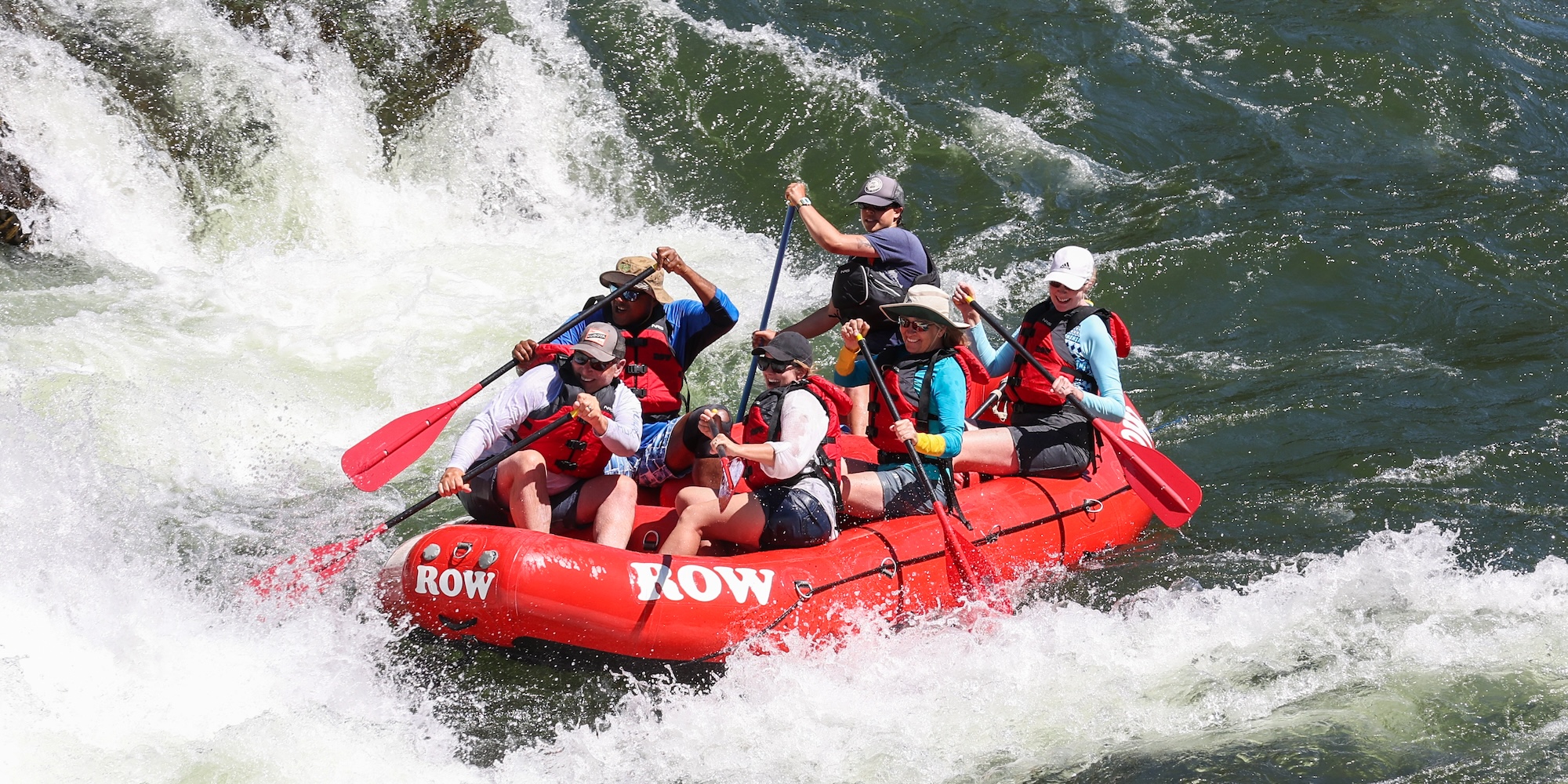
How many people fit in a raft?
At ROW Adventures, our rafts can hold six to eight rafters, along with a guide who sits at the back. However, we usually have five to seven guests in each raft, and we make it a priority to keep groups or families together. That being said, you might find yourself in a raft with like-minded people who you haven’t met before, and working together is all part of the experience.
Rafting is about ensuring everyone makes it down the river safely while having a blast along the way.
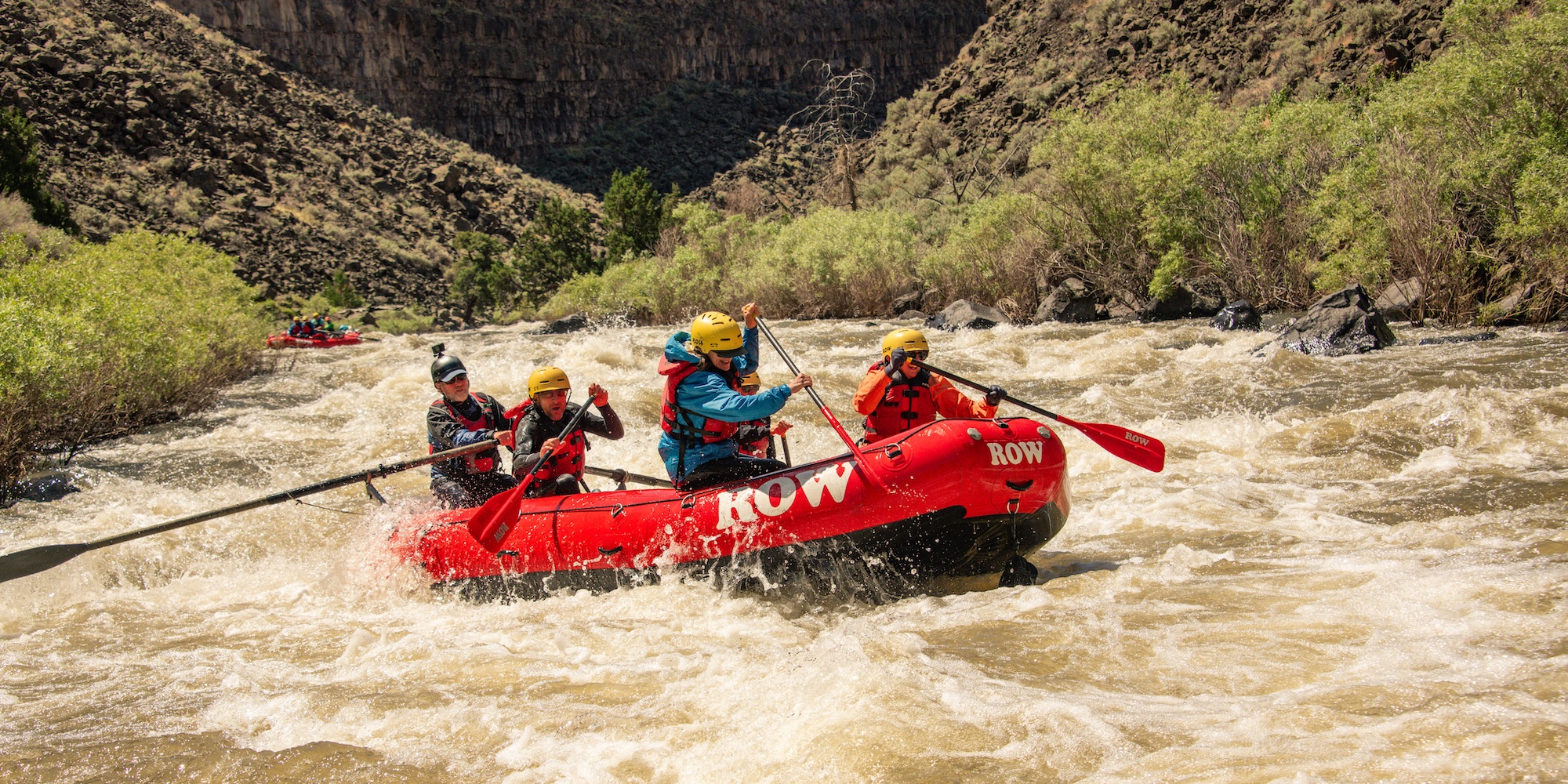
How do I choose which river to raft?
Deciding which river to raft is a personal choice and should be influenced by the skill level of you and your rafting companions. There's no use in picking a Class IV river that offers plenty of excitement if your friend is terrified the entire time because it's their first experience with a paddle in hand. As you explore different rafting trip options, make sure to thoroughly review the itinerary so you understand what to anticipate and what the conditions are typically like during that season. Keep in mind that some rivers experience seasonal changes due to spring run-off, while others have their water flow regulated by dams.
If you're uncertain about which river to choose for rafting, the ROW Adventures blog is a fantastic resource. It features a huge variety of articles, including the best multi-day rafting trips for beginners and some bucket-list adventures to be had during the spring rafting season.
The key takeaway for first-time rafters is to embrace the adventure and not let the “what-ifs” overwhelm you. Our guides are highly skilled in navigating rivers and are dedicated to ensuring your safety while also making sure you have a great time. As long as you follow their advice and approach your rafting adventure with a positive mindset, it’s bound to be an experience you'll want to repeat time and again.
